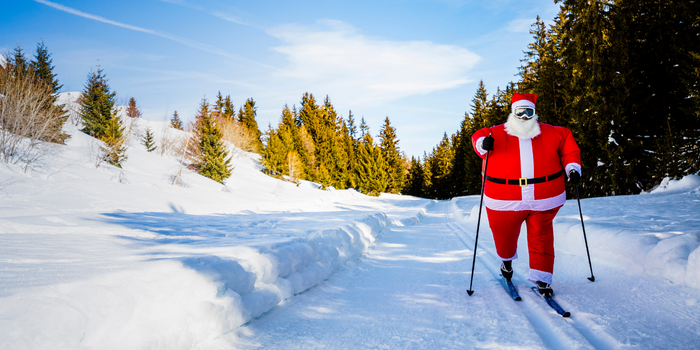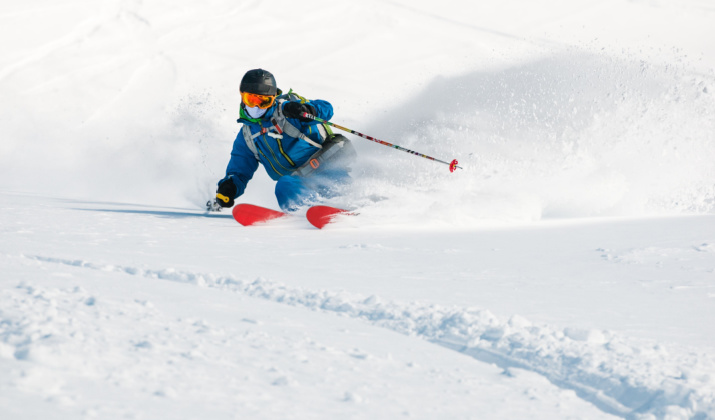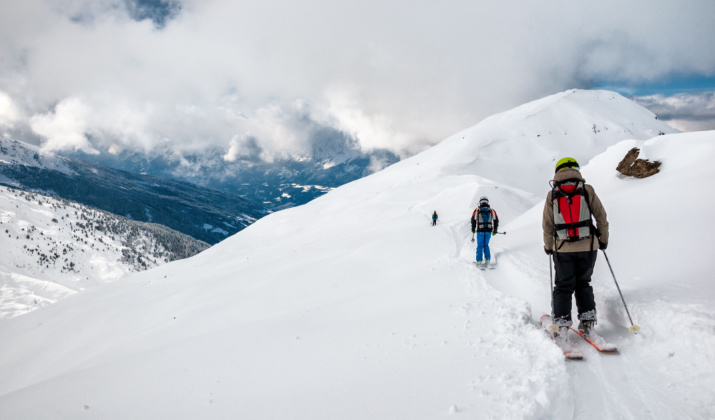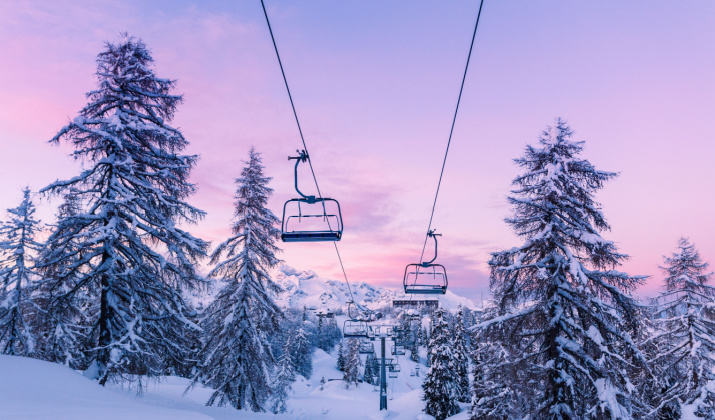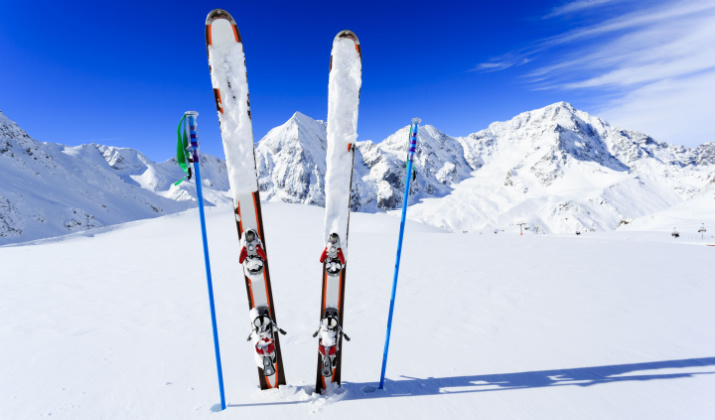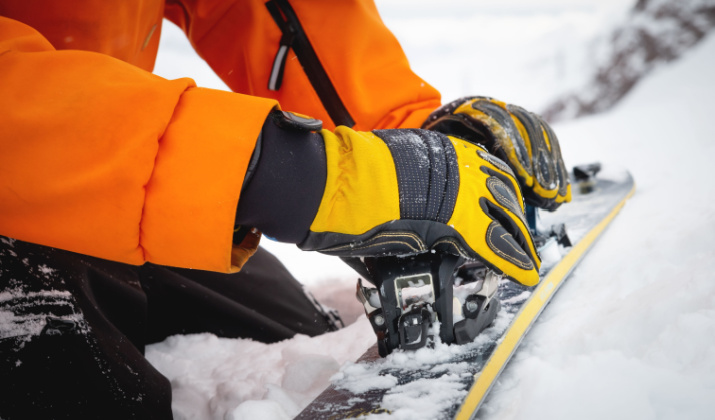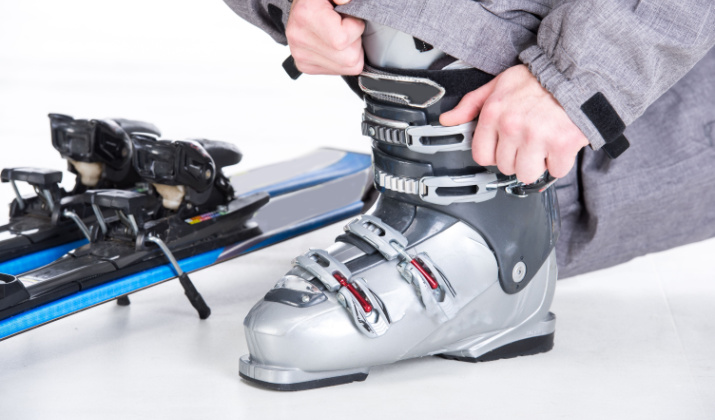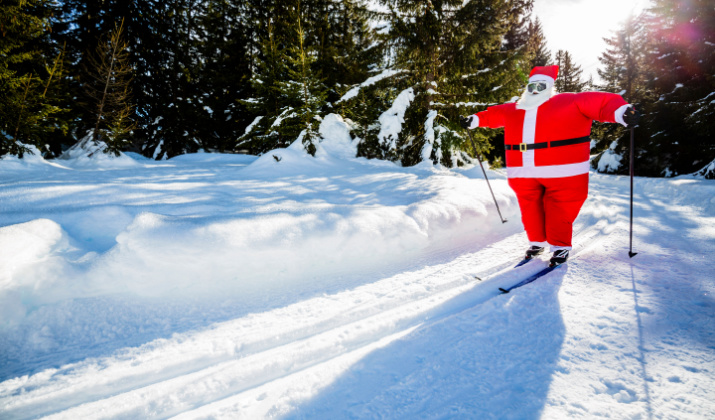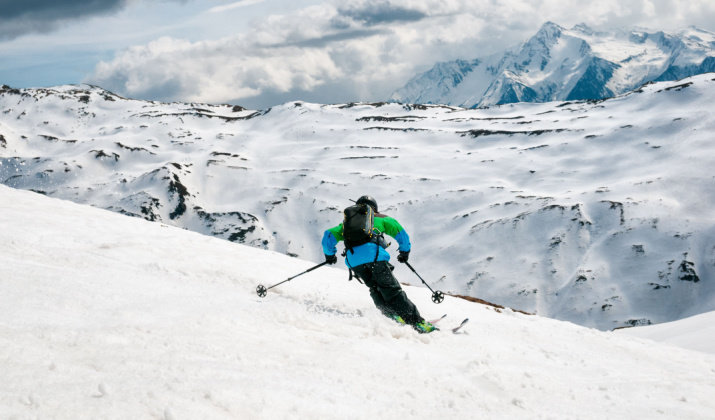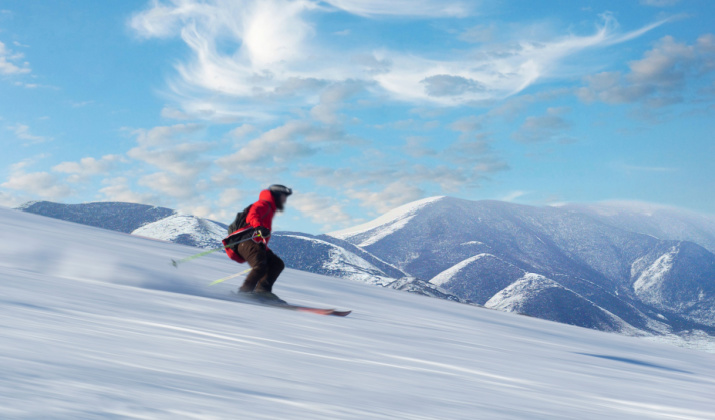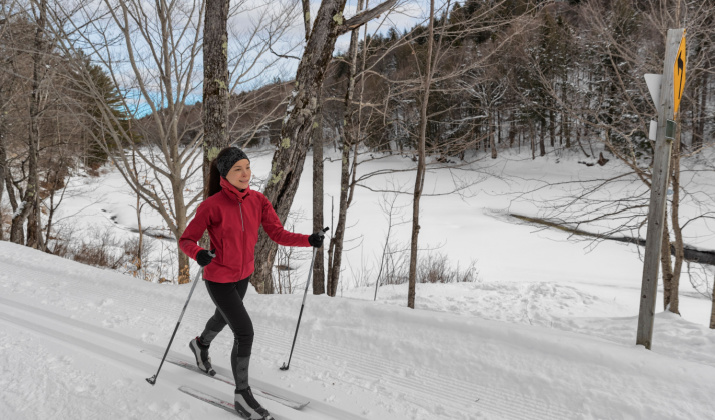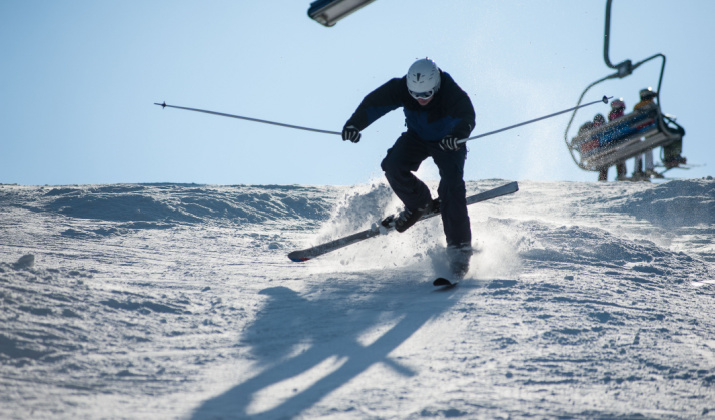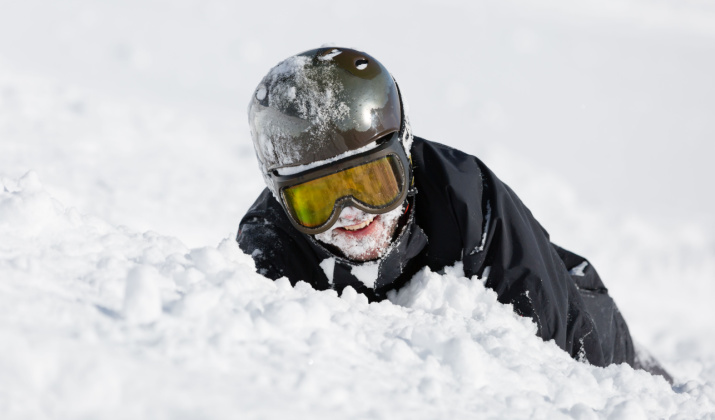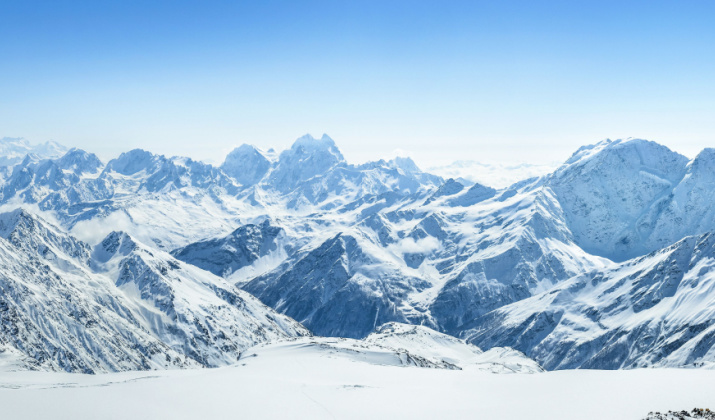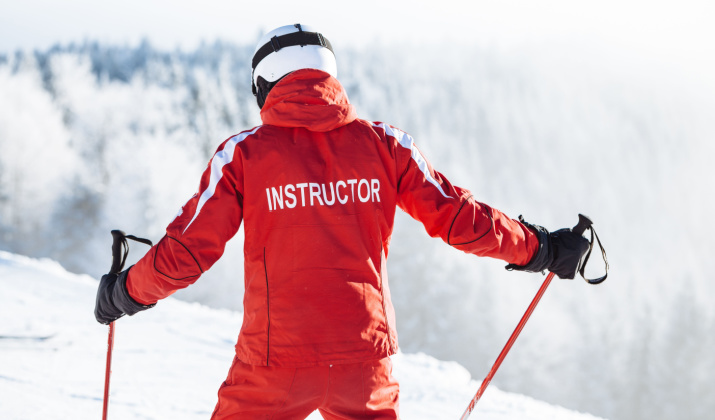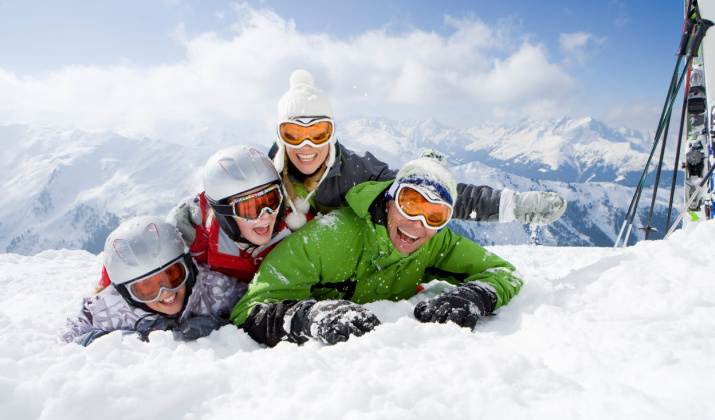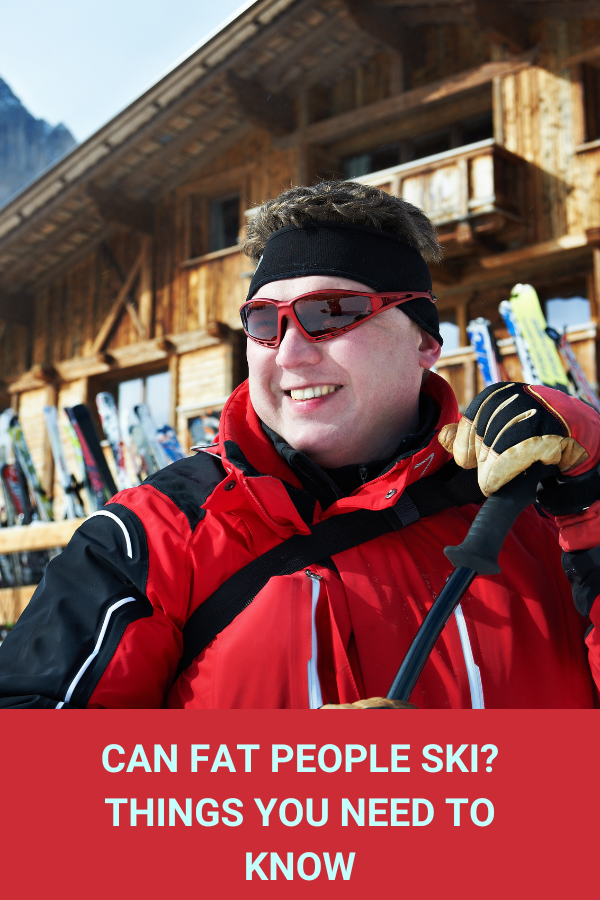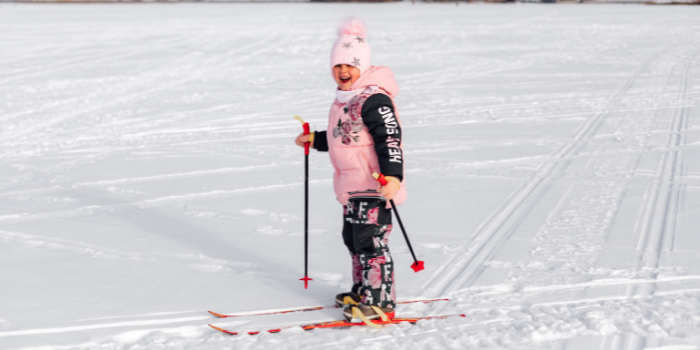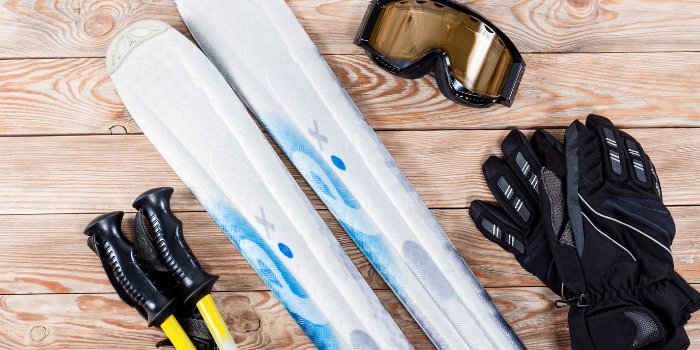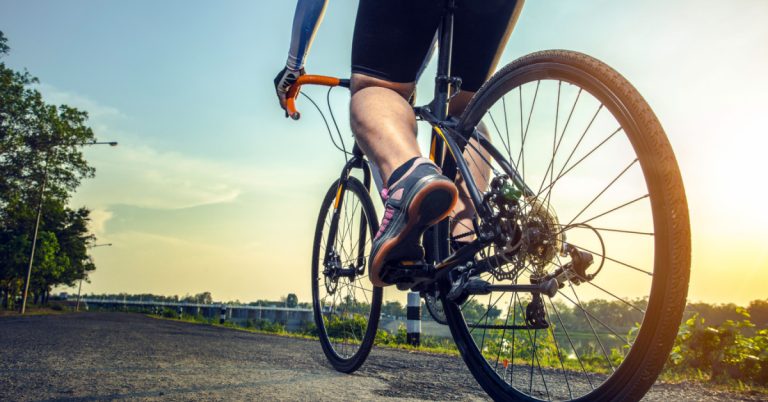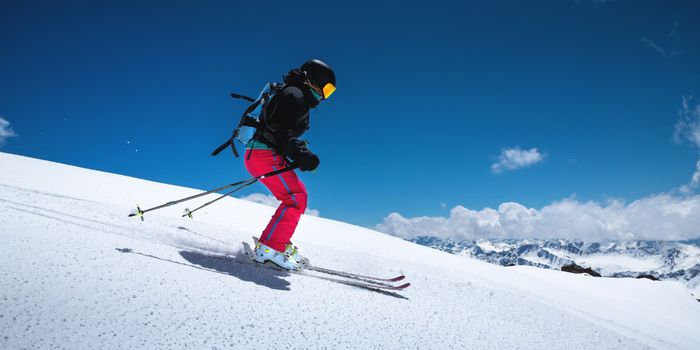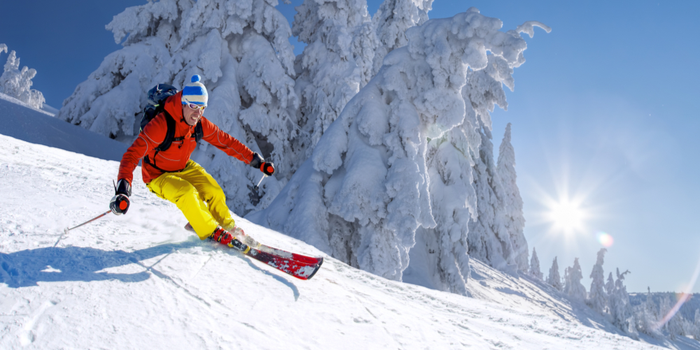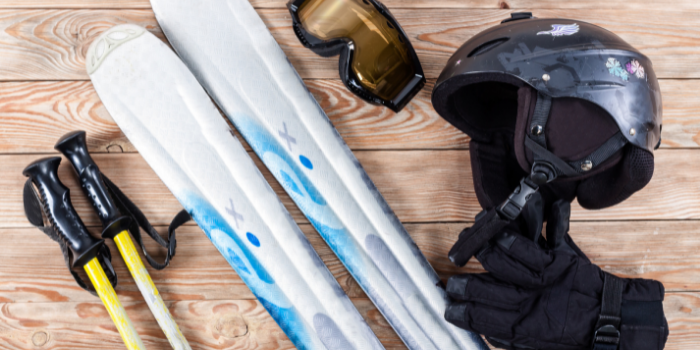Skiing is an incredible winter sport that is enjoyed by millions every year. It is physically demanding, with a lot of factors that can affect your performance.
Image source: Shutterstock
However, if you have never been skiing, you may have doubts about it being the right sport for you if you are a larger person. Skiing may seem like an odd choice of pastime if you are overweight and bulky, but can fat people ski?
In this article, we will guide you through everything you need to know as an overweight skier. You will learn how to enjoy skiing and everything associated with it while helping you prevent injuries.
Is There Anything Stopping An Overweight Person From Skiing?
Image source: Shutterstock
There is nothing to stop an overweight person from going skiing. But you will find it more difficult than a slimmer person.
An obese person may find it too difficult, but it depends on what the heaviest parts of your body are and if your obesity affects how you move.
Skiing requires lots of fast and precise movements, so if you can’t react to changes in the snow conditions, you may struggle to ski. However, everyone needs to start somewhere, and all beginners have trouble with this aspect of skiing in the early days.
With this in mind, you should give skiing a try, no matter what your body type is. If you are unsure, it is best to consult a doctor to get their professional opinion.
Even as a heavier skier, you can have lots of fun on the mountain; however, you will have much more fun if you have a healthy weight and BMI.
The great thing about being a skier, no matter what your weight, is that you don’t need to make many changes to your technique, but you do need to be realistic about your limits.
As with any sport, you need to keep your current physical condition in mind. Losing some weight would be a great idea, not just for skiing but for your general health and lifestyle.
This is easier said than done, but you are not alone; there are plenty of larger skiers still shredding the mountain and having fun.
Do Ski Lifts Have Weight Limits?
Image source : ShutterstockÂ
You need to ride a ski lift to get to the top of the mountain. If you are exceptionally big, you may worry about weight limits on ski lifts.
There is no need to be concerned, as there is no weight limit for any kind of ski lift that one person will make a difference to.
For example, chairlifts are extremely robust and designed to carry between two and eight people per chair. So even if your body weight is three times greater than your ideal weight, you won’t trouble a ski lift in any way.
Do I Need Special Ski Equipment As A Fat Skier?
Image source: Shutterstock
Skis
The skis you use depend on your weight, height, and ability. Taller and heavier skiers need longer skis.
Longer skis distribute your mass much better than longer skis. This will help the most in soft snow, as the larger surface area of the skis allow you to float in powder much more easily.
Heavier skiers also require skis that are a little stiffer to help them turn. But if you are a beginner, don’t choose skis that are too stiff, as they will be too difficult to use for your skill level.
Bindings
Image source: Shutterstock
It would be best if you also thought about your ski bindings, as they can significantly affect your experience and performance.
Ideally, your ski bindings should be high-quality ones with robust parts and a high level of elasticity. The bindings will need to have a high DIN setting range, as the extra forces of a heavier skier will cause the skis to pop off unexpectedly if the DIN range is too low.
When you unexpectedly lose a ski while charging down a mountain, you are at high risk of a nasty injury.
Ski Boots
Image source : Shutterstock
There are many different types of ski boots that suit different disciplines and styles of skiing. Most people use alpine ski boots with the corresponding skis and bindings.
As a heavier skier, you should choose a pair of ski boots with a slightly higher flex rating for your ability. The extra stiffness will support you and help you control your skis more accurately.
Most ski manufacturers make ski equipment, including skis bindings and boots for heavier skiers. Also, you’ll find that many ski rental shops also cater to heavier skiers. However, it is best to book the specialist equipment in advance to make sure that it is available for you when you arrive at the resort.
If you’re unsure about the equipment you should use, it is best to speak to a ski technician in a ski shop.
Ski technicians are fully qualified and experienced enough to advise you on what equipment is best for you and your ability. All ski resorts have several higher shops and ski shops; some are more specialized than others.
There are usually one or two excellent ski shops with highly qualified ski equipment experts. These are the places you need to go to if you want to buy your own equipment.
If you are a beginner skier, it is best to rent your ski equipment. This is because you can make sure you will enjoy it before you buy, and you can change it throughout your trip for free to suit your ability and the snow conditions.
If you want to buy a piece of equipment, it is best to start with ski boots. Your ski boots can be used with rental skis and bindings; they will be more comfortable as they will mold to your feet over time.
You can also ensure that your ski boots suit your weight. This is because some ski shops may not have boots suitable for you if your weight is considerably more than the average person’s.
Can You Buy Plus-Size Ski Clothing?
Image source: Shutterstock
You may think that skiing is an energetic sport, so all the clothing is designed for thin people. But there is no need to worry; several ski clothing manufacturers make plus-size jackets, pants, base layers, and mid-layers.
When it comes to buying plus-size ski clothing, you may find that only some of the items come in larger sizes. Therefore you might not get the exact style or specific outfit you want.
The most important thing about buying ski clothing is ensuring it is waterproof and breathable. The next thing is that you should choose a jacket that’s insulated but not too insulated.
If your jacket has too much insulation, you’ll get hot very quickly, making you uncomfortable, sweaty, and tired.
It is best to choose reasonably thin ski clothing so you can put extra layers underneath. When you wear layers, you can add or remove them to suit the weather conditions and the temperature.
Tips For Skiing As A Larger Person
Image source : Shutterstock
Let’s go into some of the things that can make your skiing trip more enjoyable as an overweight person. These tips will apply to you if you are a complete novice or have been skiing for a few years and put on some weight over time.
Exercise In Advance
Image source : Shutterstock
There’s no doubt about it that the fitter you are, the better at skiing you will be and the more fun you will have once you’re on the mountain. Even if you are a larger skier, you can improve your fitness and body condition in the weeks leading up to your ski trip so you can make the most of it.
Start exercising about six to eight weeks before you go on your skiing trip. Skiers need good leg strength, a strong core, balance, and cardio fitness.
This may seem like a lot of work, but it’s not really that bad, as doing a little bit is better than nothing; here are some exercises you can do.
Improve Your Core And Balance
One of the best ways to improve your core and balance strength and flexibility is to take some yoga classes. You can do yoga in a group or on your own at home. There are many different yoga classes on YouTube.
If you have a strong core and great balance, you’ll be able to react much more quickly to changes in snow conditions. You will also be able to move more efficiently; more importantly, you will significantly reduce your chance of injuring yourself on the mountain.
The great thing about yoga is that you can go to a yoga class no matter how big or unfit you are; there are plenty of online courses for skiers.
Another great way to improve your core strength is to do Pilates. Pilates is an excellent way to strengthen your abs obliques and all the other muscles you use to support yourself while skiing.
Improve Your Leg Strength
Having strong legs is very important for a skier. Your legs are constantly working as you ski over the bumps, make turns, and jump. The skiing position is almost like you’re doing a constant squat; therefore, it is great to have strong thighs and glutes to be able to do this for extended periods of time.
Some excellent leg strength exercises include squats, lunges, deadlifts, stair climbers, and even cycling.
Improve Your Cardio Fitness
Image source : Shutterstock
Your cardio fitness is very important as a skier. This is because you are spending a lot of time on your feet exerting yourself. You can do many different cardio exercises, but it’s good to find one that you enjoy so you can do more of it.
Lots of skiers use cycling or mountain biking to improve their cardio fitness. You can even get a good workout using electric bikes as they assist you, but they still get your heart rate up.
You could start jogging a couple of times a week, increasing the distance and intensity each time you go out. However, if this is too much for you, you could simply start walking or do any other activity that will get your heart rate up to burn fat and improve your cardiovascular health.
Falling Over
Image source : Shutterstock
If you’re new to skiing, you need to get familiar with falling over; unfortunately, it’s part of learning how to ski. However, most of the time, these falls are pretty minor, and you probably won’t hurt yourself. In fact, they are usually funny for you and anyone watching.
Having said that, the extra weight you have as a heavier skier increases your risk of falling over; therefore, you are more likely to injure yourself than a fitter skier.
One of the biggest frustrations when you fall over is trying to get up again. This is especially frustrating for heavier skiers as they find it more challenging to get back on their feet.
Occasionally you may have to take your skis off so you can stand up, especially if you fall on flat ground.
When you fall on flat terrain, it is best to lie sideways in the snow with your feet and skis down the fall line. You can push yourself up from this position using your poles or hands.
By pushing into the snow above you, you can put your body weight over the top of your skis and stand up. You may find that you run out of leverage to push with your arms to get your body upright.
If this is too much for you, don’t worry about it; lie back down and unclip your skis. Standing back up without your skis on is much easier, and you won’t waste the valuable energy that you need to carry on with your day of skiing.
Falling on a steeper slope is less of a problem as it makes it easier to get back on your skis. Pushing off a steeper hill to get back on your feet takes much less energy and effort.
Wear A Helmet
Image source :Shutterstock
No matter what your ability or fitness level, you should always wear a ski helmet on the mountain. The fact that larger skiers have more chance of falling over means they have even more reason to wear helmets.
It is true that ski helmets don’t prevent all severe injuries; however, they make a big difference to minor injuries, which can save your life or prevent you from having life-changing injuries.
Ski helmets these days are incredibly comfortable; they keep you warm and are lightweight. With this in mind, there is no reason to not wear one; they are much better than a wooly hat.
Altitude
Image source: Shutterstock
One thing that many people don’t realize is that when you’re at altitude high on a mountain, the air is much thinner than it is at sea level or even lower down in the result. The reduced oxygen level higher up makes exerting yourself more challenging. You soon get out of breath, no matter what your fitness level is.
If your fitness level isn’t that good, you will feel the effects of altitude much more quickly and severely than some with a good fitness level. However, you’ll become acclimatized to the attitude after a few days, and it will be less of a problem.
Book Lessons
Image source: Shutterstock
Some people who haven’t skied before decide to teach themselves how to ski or just give it a try. This is not a good idea as it can be dangerous and leads to very bad habits when it comes to technique.
You may have a friend who is a more experienced skier who offers to give you a ski lesson. This might sound like a good idea at the time, but you may regret it.
Your friend may be an excellent skier, but they may be very bad at teaching; this can make the learning process frustrating for both you and your friend. With this in mind, it is best to book a ski lesson or two.
A ski instructor will be able to take you to the best places on the mountain for your ability and for the snow conditions. They will also tailor your lesson to suit you and your learning style.
Ski instructors have all the best practices to get you skiing with great technique and make your lesson lots of fun at the same time. It is best to book your ski lesson well before your ski trip to ensure that you get a place in a group lesson or a one-to-one session.
One-to-one lessons are the best choice, as your instructor can give you all the attention you need. Group lessons are less expensive and can be lots of fun, but the instructor may not be able to give you enough time.
As a heavier skier, you are more prone to injury and tire much more quickly. Therefore learning the proper techniques from an instructor will mean that you use less effort so you can ski for much longer and with much better technique.
In addition to all this, a ski instructor has all the tricks that will make your life easier as a skier. For example, they can tell you the best ways to get up after a fall, stay in control, stop quickly, and use ski lifts safely.
You can take a skiing lesson no matter what your ability. Just because you are a bigger skier, it doesn’t mean you can’t ski in advanced terrain.
Taking lessons will help you perfect your technique and make those powder days more enjoyable. You don’t have to stick to the groomed runs of the resort just because you are heavier.
Look After Your Knees
Skiing is harsh on your knees, even if you don’t weigh much. As a heavier skier, your knees experience more load, making them vulnerable to injuries.
Luckily there are ways you can look after your knees to reduce the chance of knee injuries.
The first thing you can do to look after your knees is to avoid hard turns that load up your knees with lots of force. Of course, you can’t always do this; however, if you ski more smoothly, you reduce the stress on your joints.
One of the most significant ways you can hurt your knees is by skiing moguls. Moguls are large bumps that get formed on the snow throughout the day by skiers turning.
If you can, avoid moguls altogether or save them for warm sunny days when the snow is slushy. When skiing moguls take it easy, as many skiers have torn ACLs while walloping those moguls hard and fast.
You may be tempted to ski with fat skis as a larger skier. This is okay occasionally, but they are really made for skiing deep powder.
When you use fat skis on hard-packed snow for extended periods of time, your knees are subjected to much more stress due to the wider stance.
Get Ready To Work Hard
As we mentioned earlier, skiing is a physical sport; therefore, there are many health benefits to hitting the slopes. Some people can actually burn up to 3l000 calories during a day of skiing; it also strengthens your muscles, improves mental health, and boosts your immunity.
Final Thoughts
Image source: Shutterstock
So as you can see, there is no reason why you can’t ski as a fat person. The principles are the same as if you were a lighter, healthier person.
However, there are a few considerations you have to make. Such as the correct equipment and using the proper techniques to ensure that you are safe and can perform to the best of your ability.

